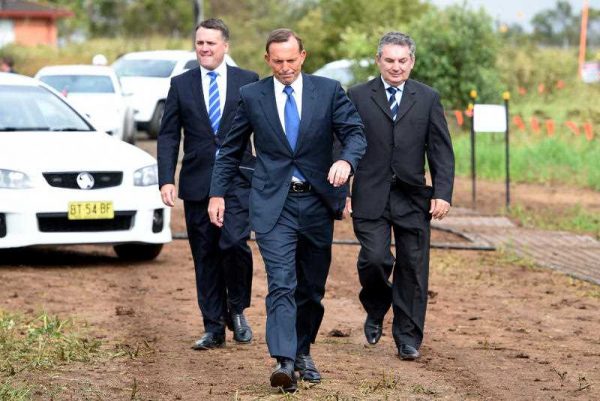In per capita terms the contrast has been even more striking, with Australia’s per capita GDP growth rate of 0.5 per cent a year since the end of 2012 falling well short of the UK’s 2.0 per cent, the US’s 1.9 per cent, Canada’s 1.5 per cent and New Zealand’s 1.3 per cent, instead being in line with the corresponding figure for Japan, and exceeding only the eurozone’s dismal 0.1 per cent. Australia’s unemployment rate has risen by 0.9 points since the end of 2012, in contrast to the declines recorded in the US, the UK, Canada, New Zealand, Japan and even in the Euro area.
Australia was the only one of these economies to have avoided a recession in the aftermath of the global financial crisis. It hasn’t benefited from any subsequent ‘rebound’ in economic activity as some other advanced economies are experiencing now, belatedly.
Still, it is becoming increasingly clear that Australia’s transition from growth led by resources investment to growth led by a combination of resources exports and other components of domestic demand isn’t proceeding as smoothly as had been hoped.
The volume of resources exports has been growing strongly — at an annual rate of 10.4 per cent since the end of 2012 — accounting for almost half the increase in Australia’s real GDP over that period. But at the same time the prices of those exports have been falling — by 30 per cent (in US-dollar terms) since the end of 2012, and by 50 per cent since their peak in mid-2011. This means that resource exports are making a smaller contribution to growth in Australia’s national income than is implied by their contribution to real GDP growth. And much of the income that is generated by resources exports accrues to foreigners, reflecting the fact that the resources sector is around 80 per cent foreign-owned. For these reasons, real GDP is a somewhat misleading indicator of Australia’s economic trajectory.
In addition, the resources sector is highly capital-intensive — and resource exports even more so than project development and construction. So the transition from investment to exports actually detracts from overall employment growth. This will become even more apparent in 2015 as the LNG sector begins to undergo this transition.
The Reserve Bank of Australia (RBA) has been seeking to foster stronger growth in domestic demand since late 2011, cutting its cash rate to a record low of 2.5 per cent by 2013 and subsequently maintaining it at that level. However, monetary easing has been less efficacious in generating a broadly-based upswing in domestic expenditures than in the past.
The extended period of record low interest rates has triggered an increase in the demand for housing. But more than 70 per cent of the increase in borrowing for housing since the RBA began cutting rates has been by investors. Over 90 per cent of that borrowing has been for the purchase of established properties, serving primarily to push up their price. And although new dwelling commencements have attained record levels — partly aided by rising foreign investment in new housing developments — new dwelling construction represents only around 3 per cent of GDP — less than the amount by which resources investment is likely to fall over the next two or three years.
Rising household wealth, largely driven by higher property prices, hasn’t ‘spilled over’ into increased household spending in the way that it did in the early 2000s. Australian households may be willing to borrow in order to finance speculative property investment — something that the Australian tax system treats very favourably. But they remain cautious about borrowing for any other purpose, given their still elevated levels of outstanding debt. Weak growth in household disposable income — largely reflecting the slowest growth in real wages since the recession of the early 1990s — is also restraining Australian consumers’ spending behaviour.
There is little basis for expecting a strong pick-up in demand for Australian products. With the Australian dollar still at elevated levels by historical standards — despite a 14 per cent decline in trade-weighted terms since the end of 2012 — it’s not surprising that businesses outside of the resources sector remain hesitant about increasing hiring or capital expenditures. Employment is continuing to grow, but at a slower rate than the labour force. As a result, unemployment is continuing to rise — especially among new entrants to the labour force (predominantly young adults).
2015 is likely to see little if any change in these ‘headwinds’ confronting the Australian economy. The Reserve Bank is reluctant to cut interest rates any further, preferring that any additional support to growth comes from a lower exchange rate. For its part, the Australian government remains focussed on putting its budget on a ‘credible path back to surplus’ over the medium term, an objective towards which it made less progress during 2014 than it had hoped. This, together with the emphasis placed by state governments on retaining or regaining their triple A credit ratings, appears to rule out any substantial infrastructure investment program as a form of stimulus.
The Australian economy is, in effect, paying a price — in the form of an extended period of sub-par growth and rising unemployment — for having squandered many of the potential benefits of the period when commodity prices were rising, for having allowed its cost base to become seriously out of line with its competitors, and for having eschewed any serious effort at productivity-enhancing structural reforms during this time. A significant improvement in Australia’s medium-term prospects will require a combination of a lower exchange rate and a broadly-based program of economic reform. 2015 will probably bring the former: but the latter is yet to begin.
Saul Eslake is Chief Economist (Australia & New Zealand) at Bank of America Merrill Lynch.

